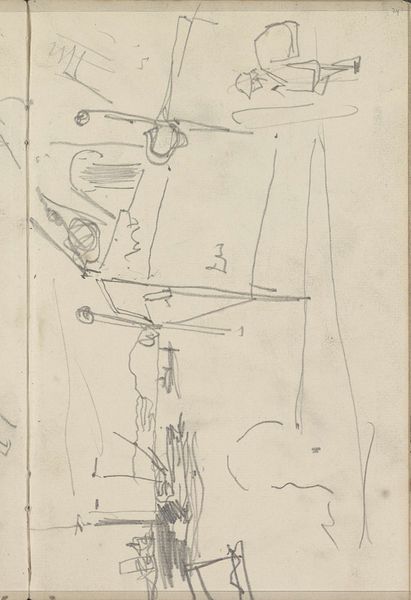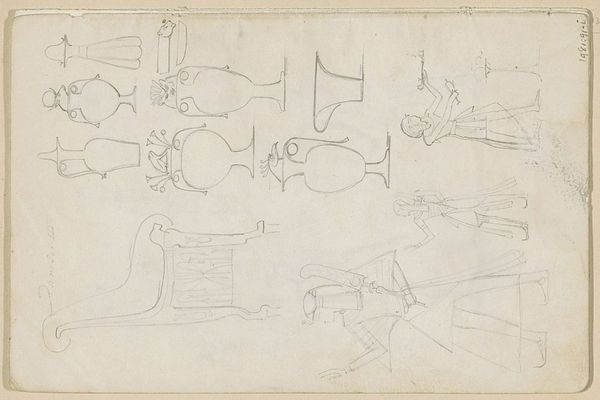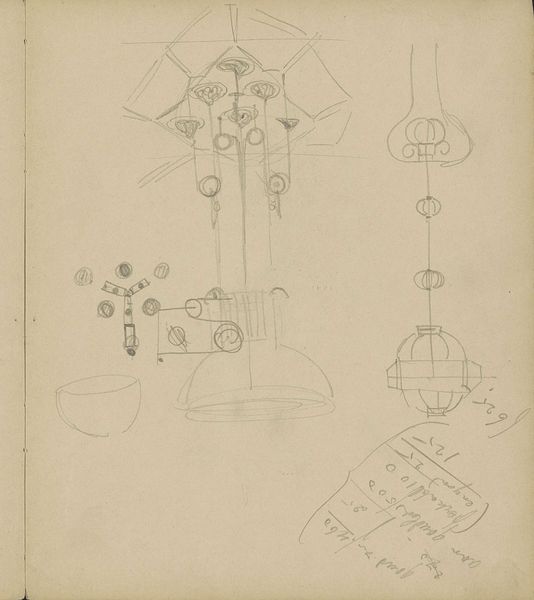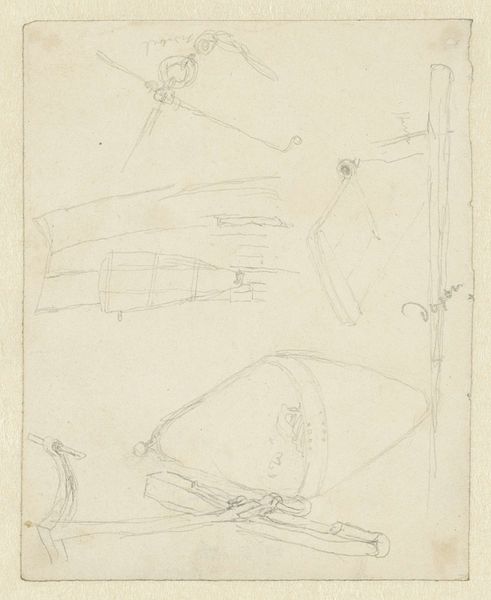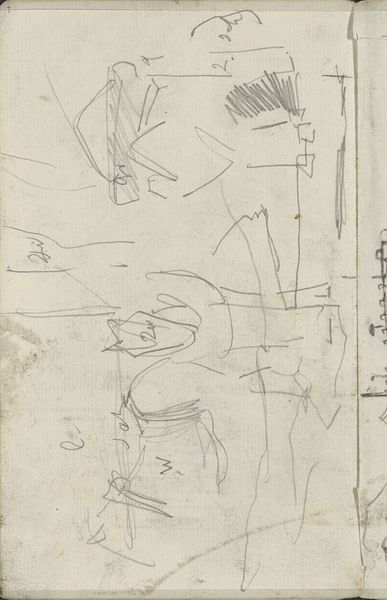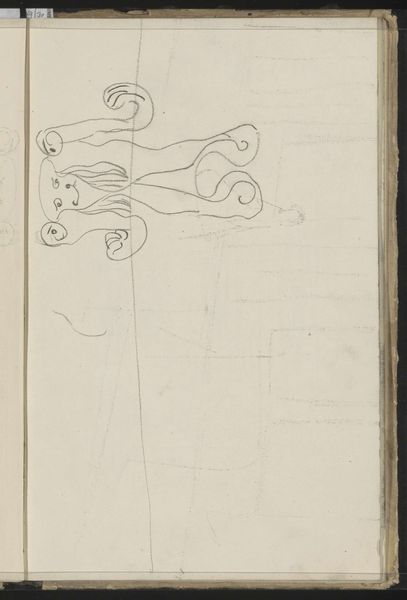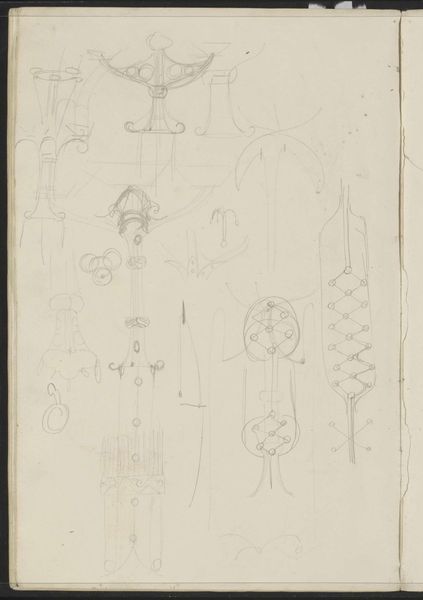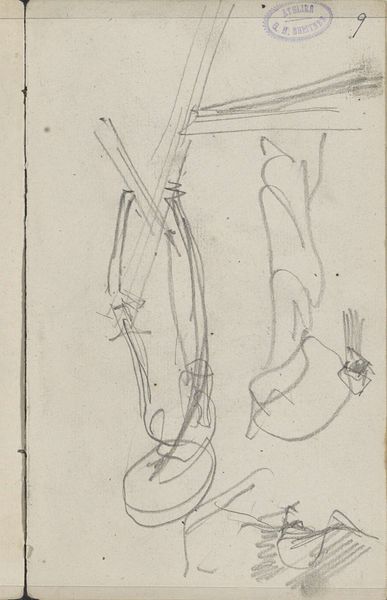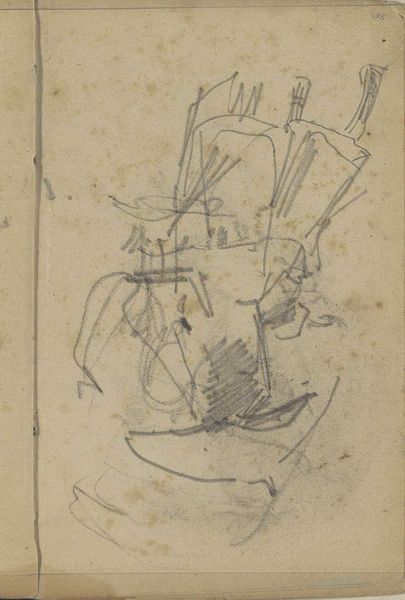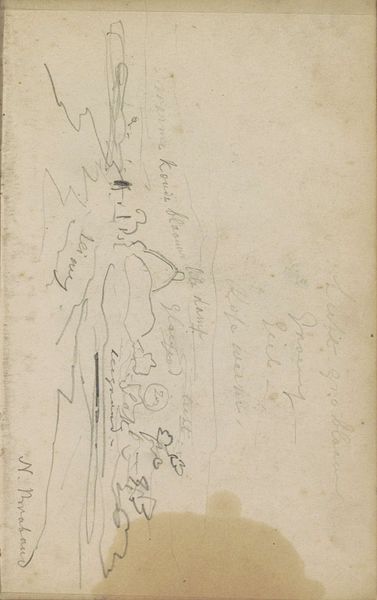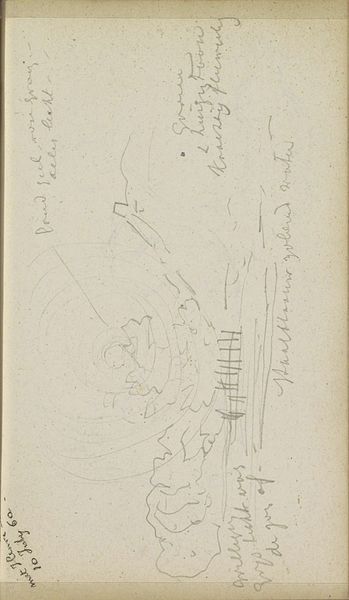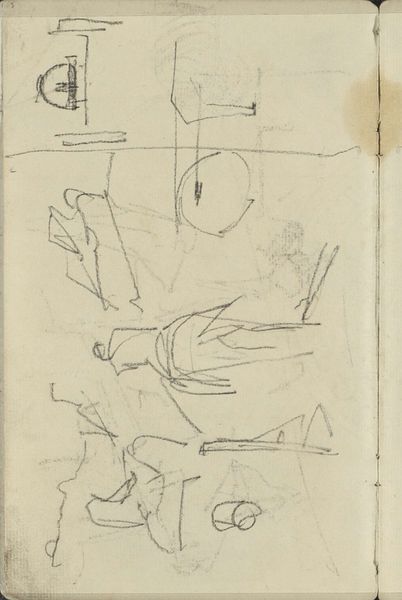
drawing, pencil
#
drawing
#
amateur sketch
#
light pencil work
#
arts-&-crafts-movement
#
personal sketchbook
#
idea generation sketch
#
sketchwork
#
ink drawing experimentation
#
geometric
#
pen-ink sketch
#
pencil
#
sketchbook drawing
#
decorative-art
#
sketchbook art
#
initial sketch
Copyright: Rijks Museum: Open Domain
Curator: So here we have Carel Adolph Lion Cachet's "Ontwerpen voor hanglampen," a design for hanging lamps from around 1905 or 1906. It’s currently held at the Rijksmuseum. Editor: It looks like a page from a sketchbook, a collection of geometric shapes rendered in pencil. It feels very preliminary and gives me a sense of the design process, but I wonder, what significance do these designs hold in a broader context? Curator: Exactly. We have to think about this in relation to the Arts and Crafts movement. These designs aren't just about aesthetics. They reflect a desire to reclaim craftsmanship in an increasingly industrialized world. Cachet, like others in the movement, was pushing back against mass production and its impact on labor and artistic integrity. Editor: So, these lamps aren’t just sources of light; they are statements about labor? Curator: Precisely! Think about the historical moment. The early 20th century was a time of immense social and economic upheaval. The Arts and Crafts movement championed handmade goods as a way to resist the alienation of labor. These designs represent an aspiration for a more equitable relationship between the artist, the worker, and the object itself. How might the emphasis on geometric form play into this ethos, do you think? Editor: Perhaps the emphasis on geometric forms relates to an inherent sense of order and functionality that stands against the supposed chaos of industrial design? Curator: Yes, consider that! And it also suggests a commitment to principles accessible to the everyday artisan. These aren’t ornate, overwrought designs. There's a simplicity that democratizes the creative process. It allows the individual artisan to reclaim a sense of agency. Editor: That really changes how I see the drawing. It's more than just sketches; it's a document reflecting social concerns. Curator: Absolutely. By examining the context surrounding these designs, we gain a richer understanding of the artist’s intentions and the cultural values embedded within the work. It makes you think about who designs and produces objects and for whom.
Comments
No comments
Be the first to comment and join the conversation on the ultimate creative platform.

